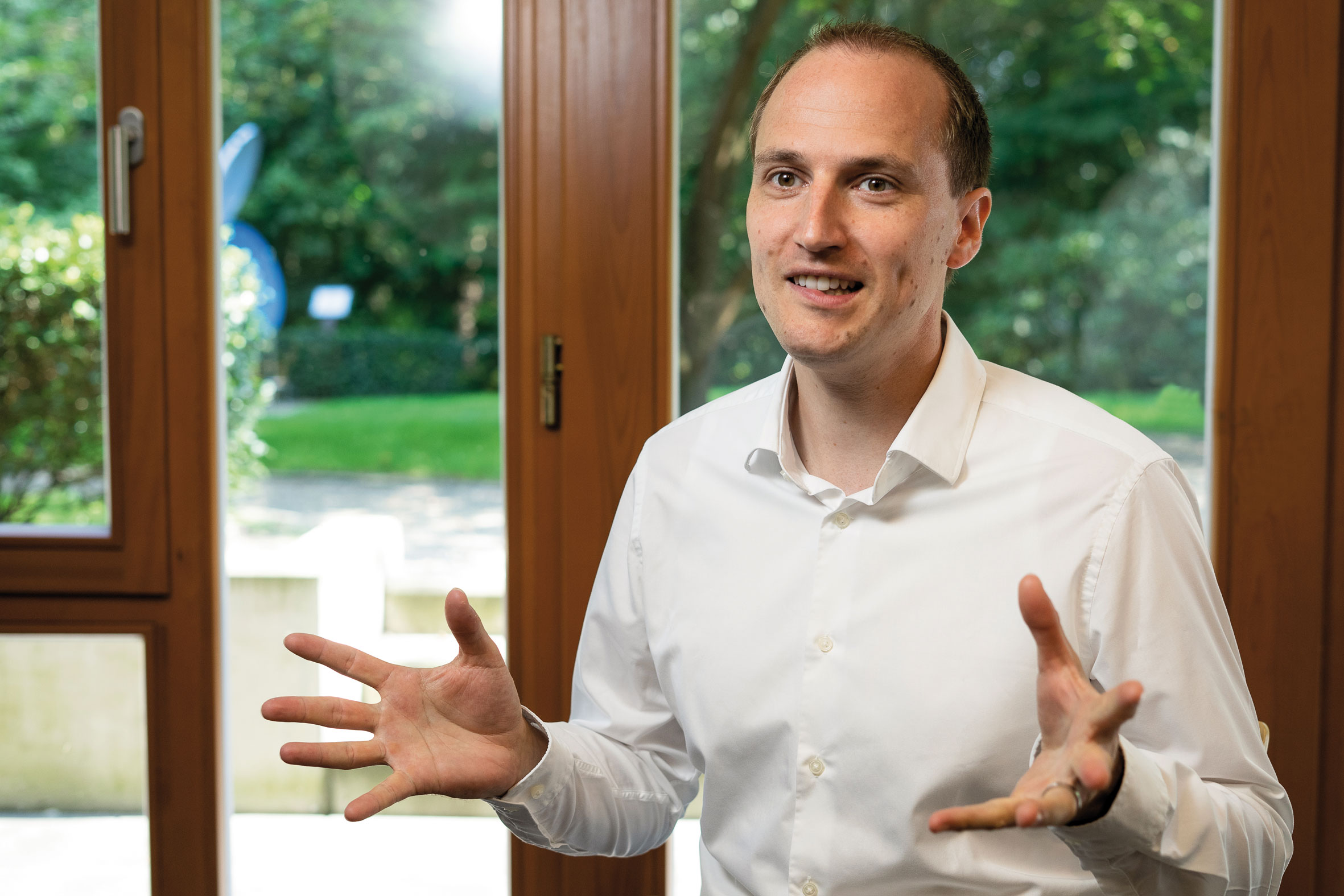Interview with Christian Rollwage
The widespread availability and easy handling of small and large quadcopters, hexacopters and other aircraft are opening up many new fields of application for this technology – but also leading to threatening scenarios. Being able to react appropriately requires ways to detect and localize potential sources of danger. Christian Rollwage, Head of »Audio Signal Enhancement«, explains where the challenges in drone detection lie. The processing and enhancement of speech and audio signals are among the core competencies of the Hearing, Speech and Audio Technology Division. These include the optimization of disturbed audio signals as well as the development of recording and processing technologies that make it possible to use audiological data for acoustic sensors even if ambient conditions are exacting, such as when there is considerable environmental noise. Apart from improving audio and speech signals, the localization of noise sources and automatic speech recognition constitute an important part of the research work conducted at the Fraunhofer IDMT in Oldenburg.

Mr Rollwage, you develop software and hardware for drone detection and localization. What is the specific reason for this?
Easy access to drones doesn’t just make children’s (or adults’) eyes light up. Unfortunately, it also opens up new possibilities to harm society. At events with lots of people the scenario of an approaching drone is tricky and in the case of airports even a direct risk that can lead to financial damage in the millions when flights are cancelled. The event organizer or the air traffic controller has to decide within seconds: Is the drone on a peaceful mission or not?
What precisely are you working on at the Fraunhofer IDMT?
Our main tasks at the Fraunhofer IDMT are acoustic drone localization, that is, finding out by means of acoustics from which direction the flying object is approaching, and drone detection in order to determine whether it’s really such a flying object at all. To make this possible, a large part of our work involves processing and optimizing acoustic signals, that is, freeing them of background noise and then interpreting them.
What exactly happens in drone localization?
Drone localization by means of acoustic sensors makes use of the effect that sound in the air needs a certain time to spread, that is, it’s not everywhere at the same time. If you set up two microphones a distance apart from each other, you can see that the acoustic signal, depending on the direction from which it’s coming, hits the microphones at different times. This time delay produces an angle that indicates the location of the sound source in a plane. By using more than two microphones it’s even possible to determine the elevation and horizontal angles and thus plot the drone’s position in a three-dimensional space.
And what do you understand by drone detection?
Put simply, each drone has an »acoustic fingerprint« that we can identify and store in a database. What we understand by drone detection is the automatic search for this fingerprint, that is, for a specific pattern in the acoustic signal that can be assigned to a certain drone. Through machine learning processes, basically speaking artificial intelligence, a computer is able to recognize and interpret this pattern. These pattern recognition processes require a lot of data in order to be trained reliably.
What’s the biggest challenge in drone localization and detection?
The biggest challenge for acoustic processes is always background noise. However, multi-channel signal pre-processing can suppress most sources of interference in such a way that they influence the result to only a very small degree.
»We help the user to assess the risk presented by an approaching drone.«
What happens next?
We’re currently in the process of building a demonstrator for the detection and localization of drones that will be tested by various users and then optimized on the basis of their feedback. We anticipate that in the coming year we’ll have a system that’s ready to go. It’s important to stress that the acoustics are not the whole story. You always need a mix of other sensors, for example, optics, radar or radio reconnaissance, in order to be able to offer the customer reliable end applications.
What particularly motivates you in your work?
What especially motivates me is protecting people from potential hazards and being able to offer this protection at a reasonable price.
Last modified:
 Fraunhofer Institute for Digital Media Technology IDMT
Fraunhofer Institute for Digital Media Technology IDMT